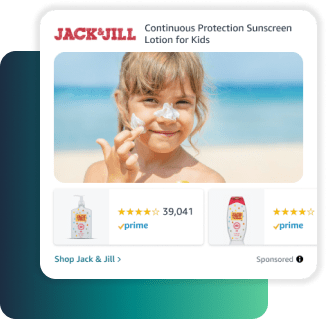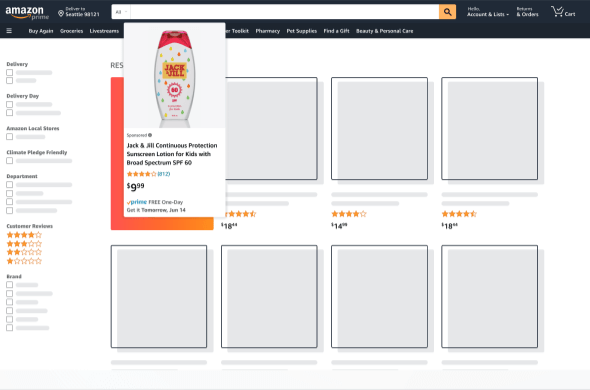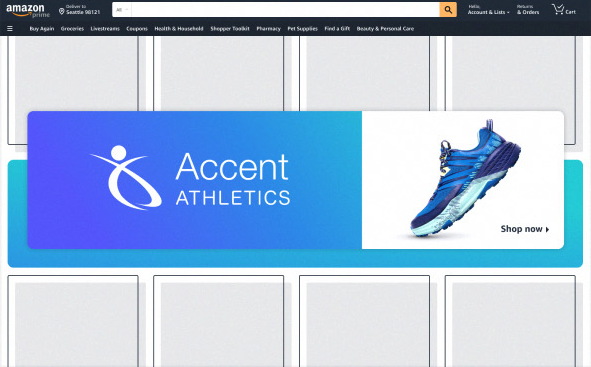This is the third installation in a four-part series. Part 1: What You Need to Know Before Selling on Amazon | Part 2: The 7 Steps for an Effective Amazon Seller Account
Successful sellers recognize that Amazon is a search engine as much as it is a marketplace. The fact is, having the best product doesn’t really matter if no one can find it on the site. It’s kind of like the tree falling in the woods…
According to our research of nearly 1,000 consumers, when unfamiliar with a product category, 34% will start their search on Amazon versus a search engine such as Google (47%). In fact, 66% use Amazon to research a product that they plan to buy somewhere else.
Amazon shoppers are frequent users of the site, and they spend quite a bit of time there. Our research also showed the following:
- 62% of Amazon shoppers visit the site at least once per week, a fact that you need to keep in mind when planning your advertising strategy and spend.
- com shoppers spend an average of 22 minutes per visit, which means your brand needs to stay top-of-mind during the Amazon purchase process.
Similar to Google Ads Search and Shopping campaigns, you want the result of your advertising on Amazon to increase your visibility and rank within a shopper’s search results, which will lead to conversion and sales increases. The stakes are quite high and winning on Amazon means that you need to do all you can to become the #1 search result. Consider these eye-opening statistics:
- The #1 listing on Amazon search gets 73% of the clicks.
- The #2 listing gets 14% of the clicks.
- The #3 listing gets 5% of the clicks.
- All other listings fight for a share of just 8% of the clicks.
In addition to ads that increase visibility in search results, Amazon Advertising also offers many options to buy display, video and audio ads both on and off Amazon. You should select the best solutions to support your full-funnel advertising strategy, from creating awareness to retargeting shoppers that have already visited your product page. These tools can help you capture demand/sales as well as help build and maintain your customer base through awareness-building strategies.
In this post, we’ll take a look at three different advertising options offered by Amazon: Sponsored Brands, Sponsored Products, and Sponsored Display. The simplest way to think about these options is that Sponsored Brands help drive awareness, Sponsored Products help drive consideration, and Sponsored Display helps drive conversion.
Sponsored Brand ads may be displayed at the top of, alongside or within shopping results and can feature your brand logo, a custom headline and multiple products. These ads drive awareness of your brand and allow you to control the message. Sponsored Brand ads link directly to your brand store and product pages, engaging shoppers in a brand-centric environment that is all about you.
With Sponsored Brand ads, use your headline to highlight what makes your brand unique and display examples of your product selection. Don’t forget to hone your targeting by using negative keywords to weed out search terms that don’t result in conversions or are not a good fit for your brand.
Sponsored Brand ads can help brands that are new to Amazon to engage shoppers as they browse the site. For established brands, these ads help maintain brand awareness levels and provide opportunities for repeat customers to find additional products offered in your brand store.
New-to-brand metrics help you measure the portion of conversions and sales attributed to customers who hadn’t purchased from your brand in the previous twelve months. In Q3 2019, approximately 60% of all Sponsored Brand sales came from new-to-brand customers.
At SFW, we have been exploring video formats for Sponsored Brands video ads (currently in beta) and have found they have been delivering very promising results.
Sponsored Product ads promote individual products on Amazon. They appear in shopping results and on product detail pages and are the most popular avenue for sellers based on advertising spend. They drive consideration by helping increase your visibility and allowing shoppers to discover your products.
According to our research, 78% of Amazon shoppers look at Sponsored Products – with 21% saying they look at them all the time.
There are two types of campaign targeting for Sponsored Product ads: automatic and manual. Automatic targeting allows Amazon to match your ads to product searches using the A9 algorithm. This targeting type uses the content from your product listing and sales data from your product to determine which searches to display your products.
Manual targeting allows you to directly control the keywords and products your ads are targeting. Generally, these campaign types are used together; automated campaigns are used to identify new and high-conversion keywords while manual campaigns are used to optimize the bidding and targeting those keywords. Using these two campaign types together maximizes the opportunity to uncover new keywords and efficiently spend on those that are already identified.
This type of advertising is particularly useful for creating awareness for new products, seasonal items, clearing excess inventory, or showcasing a bestselling item.
Sponsored Display ads differ from Sponsored Brand and Sponsored Products by reaching audiences both on and off Amazon. You have three targeting options for Sponsored Display ads, and each is based on a variety of shopping signals.
- Views targeting reaches audiences who have viewed the detail pages of your product or similar products in the past 30 days but did not purchase the product on Amazon. These ads will appear on third-party websites and apps (off Amazon).
- Product targeting will promote your product to customers who are actively browsing your product or products you identify as targets. They will appear on product detail pages or other product-related pages on Amazon.
- Interest targeting can create product awareness and recognition among shoppers whose behaviors within the past 90 days signal that they might be interested in your product. They also appear on product detail pages or other product-related pages on Amazon.
According to Salesforce, 64% of shoppers use multiple channels to make a purchase. Sponsored Display ads on Amazon offer additional targeting capabilities within Amazon and can also augment your display advertising efforts on other channels to make your products easier to find.
Many options and an ever-changing landscape
Keep in mind that these are just three of many options that are available to you through Amazon, such as video solutions that engage shoppers on platform and across Amazon subsidiaries like IMDb.com, devices like Fire TV and Fire Tablets, and across the web. You should work with someone that understands all of the options to find the right mix to maximize ROAS (Return on Advertising Spend), increase conversions and help capture incremental sales opportunities.
Up next: Part 4: Which Amazon seller and fulfillment options are right for you?.
Need Amazon Advertising Help? Let us know!




.jpg?width=1500&length=1500&name=Amazon-Box-Sales-Factory-Blue%20(2).jpg)
